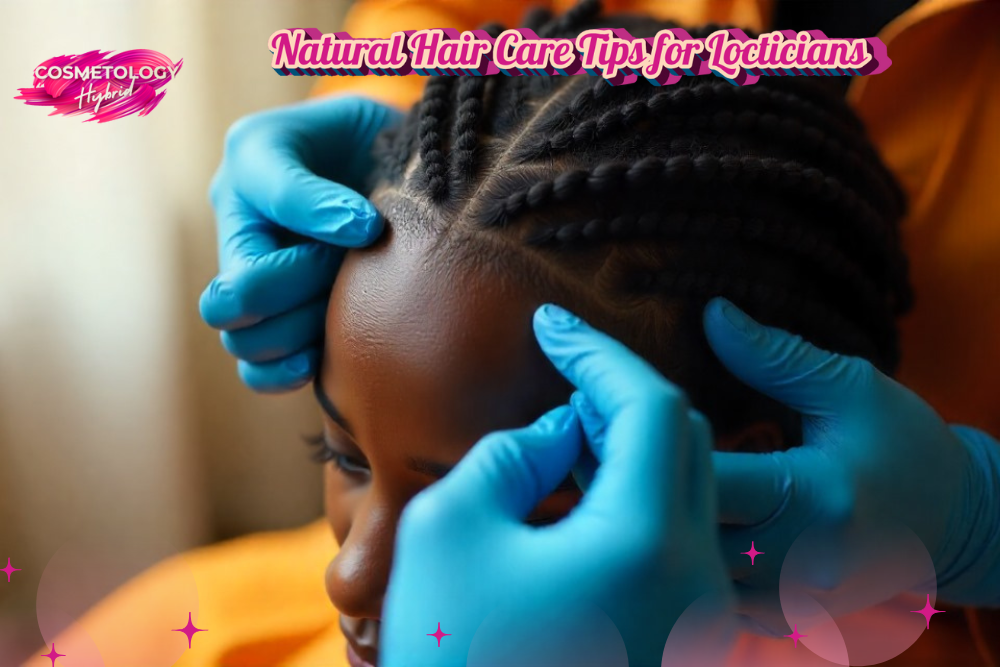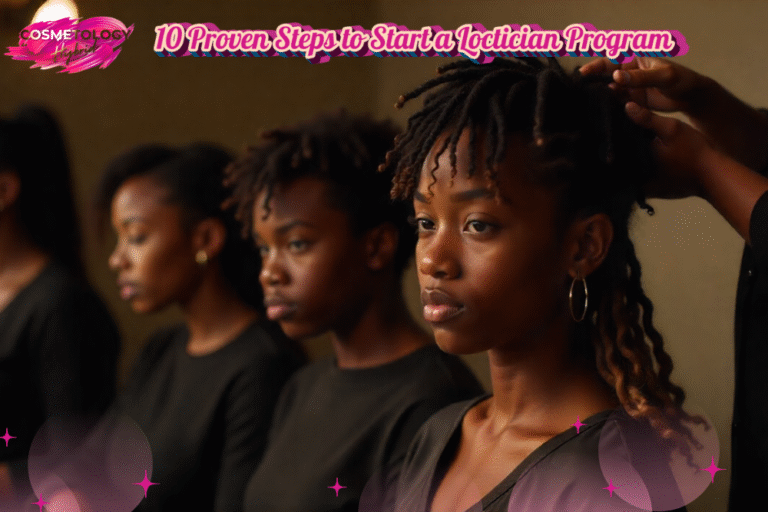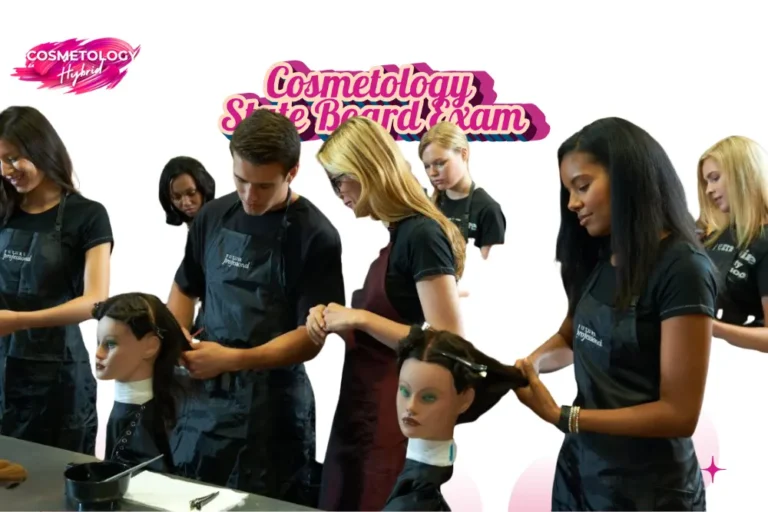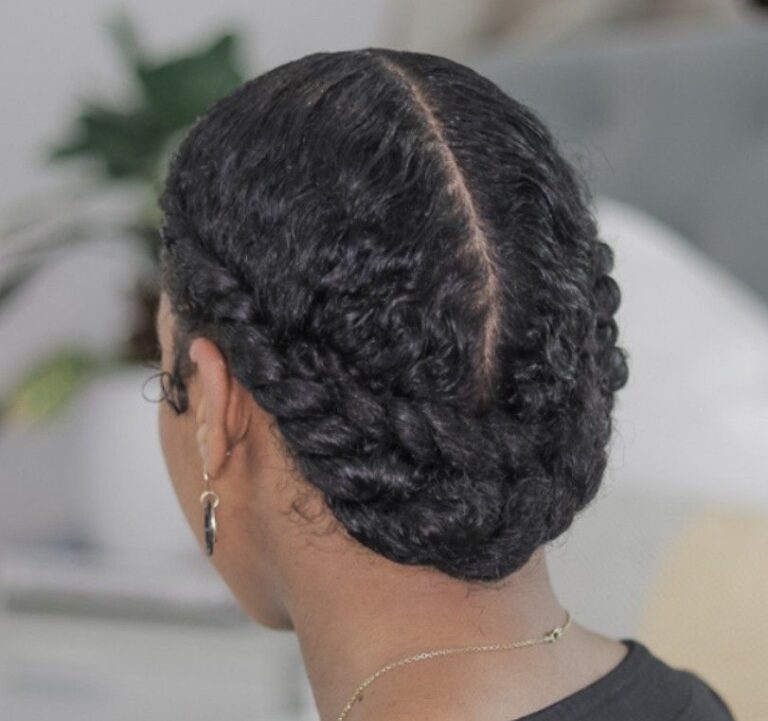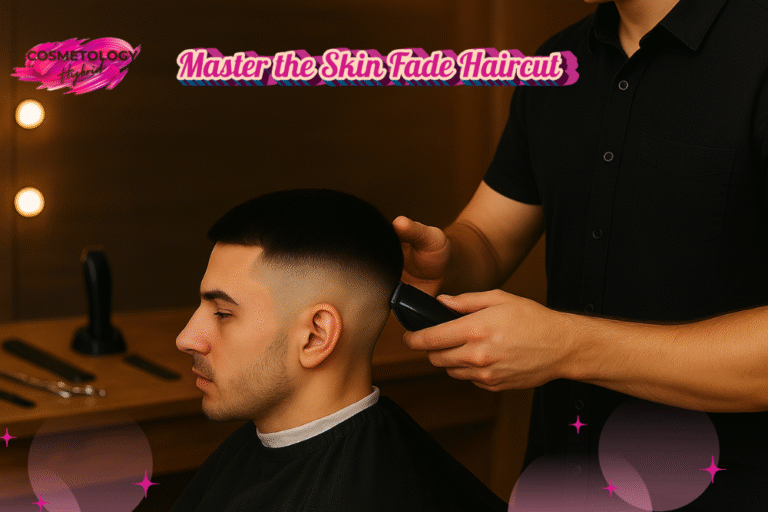Here’s the thing: if you style locs but ignore health, results will not last. This guide collects real natural hair care tips for locticians you can use right away. It covers natural hair care for locs, client teaching, product picks, and daily routines. Read closely and pick the practices that fit your clients.
Why Healthy Locs Start with the Right Care
Good locs begin at the scalp. Start by testing for oil balance and sensitivity. Use scalp care for natural hair methods to reduce irritation and promote natural hair growth and retention. A clean scalp sets the stage for every style.
What this really means is assessment first, hairstyle second. Track client history and environment. Note water hardness and pillowcase fabric, which often tie back to beauty industry trends. These small details change outcomes. Use loctician professional training to sharpen your diagnosis skills.
Protecting Natural Hair Strength and Shine
A loctician should favor lightweight oils for locs that seal without buildup. Seal with small amounts of oil after water sprays. This protects shine while avoiding heaviness that hinders long-term dreadlock maintenance.
Everyday Practices Locticians Should Follow
Consistency beats trendiness when caring for locs. Advise clients to rinse with warm water and to use residue-free shampoo for dreadlocks only when needed. Frequent, gentle care prevents brittle strands and scalp stress, which connects closely to proper skincare techniques taught in esthetics training.

Also recommend nightly protection like silk wraps and loose styles. Teach simple daily dreadlock care routines that support growth. When clients adopt small habits, retention improves, and maintenance visits go smoother.
Moisturizing Techniques for Long-Lasting Loc Health
Hydration matters most for resilient locs. Apply water-based sprays first, then follow with light oil. This two-step approach uses hydration techniques for natural hair to lock moisture deeper into the hair shaft.
Avoid heavy creams that trap dirt. Instead, show clients how to mist and palm seal. This keeps locs supple and reduces split ends while encouraging natural hair growth and retention.

Avoiding Common Mistakes in Loc Maintenance
Here’s the point: many mistakes come from overdoing it. Over-twisting, heavy wax use, and infrequent clarifying treatments all build problems. Learn to read buildup early and act on it. That saves time and hair.
Another frequent error is using high pH shampoos. These strip oils and weaken follicles. Switch to pH-balanced cleansers designed for scalp cleansing for dreadlocks to keep the barrier intact. That protects both style and health.

How Buildup Can Harm Natural Hair
Build-up chokes hair follicles and creates odor and itch. Use targeted clarifying protocols to remove product residues safely. Regular clarifying supports buildup removal in dreadlocks and restores natural luster.
Best Natural Products for Loc Care
Choose products that state ingredients clearly. Favor water-soluble cleansers and botanical oils. For example, jojoba, argan, and tea tree blend well with lightweight oils for locs and keep the scalp balanced.
A good product shelf includes a gentle clarifier, a residue-free shampoo for dreadlocks, and a light leave-in. Test each product on a small section first. Track reactions in client notes and adapt choices per case.
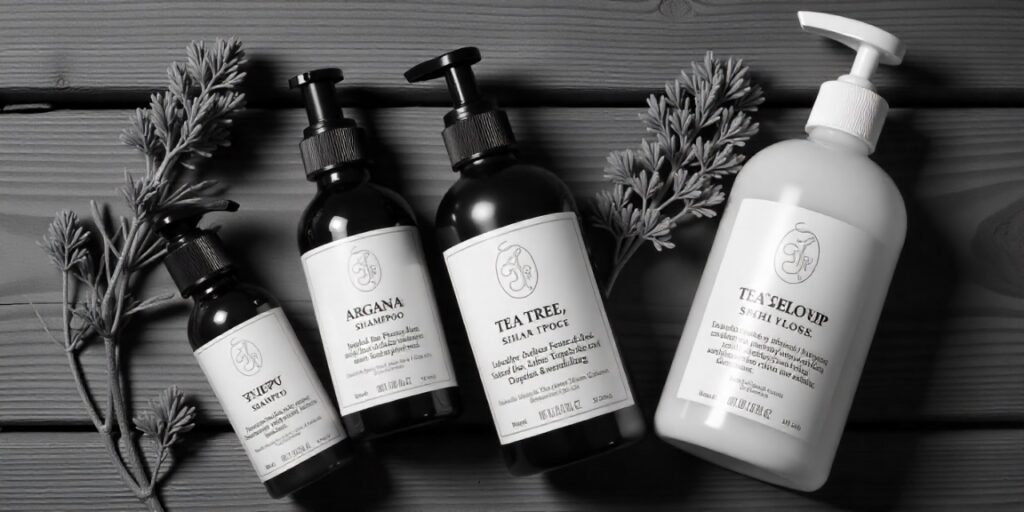
Oils and Shampoos Every Loctician Should Know
Learn how oils behave in different climates. Coconut can be heavy in humid zones, while jojoba suits dry climates. Pair oils with a clarifier that targets waxes for complete long-term dreadlock maintenance and better retention.
Teaching Clients How to Care for Their Locs
You are a teacher as much as a stylist. Offer clear aftercare instructions for clients that they can actually follow at home. Show them how to wash, dry, and palm seal. Short demonstrations beat long lectures.
Use printouts or simple video clips for reference. Reinforce client education for locticians with checklists that remind clients about night protection and periodic clarifying. This raises client trust and improves results.

Simple At-Home Routines That Prevent Damage
Recommend a weekly rinse routine with gentle massage. Advise milder cleansing every two to three weeks. This schedule reduces buildup while keeping locs fresh and manageable.
Growing as a Professional Loctician
Invest in continued learning and loctician professional training. New techniques like interlocking, crochet maintenance, and natural retwist methods evolve fast. Staying current means you offer safer, better services.
Build case studies from client work and track outcomes. Offer packages that include a short education session. This shows expertise and helps clients commit to long-term care strategies for long-term dreadlock maintenance. For more guidance on professional growth, check out these cosmetology tips.
Learning New Natural Hair Methods and Styles
Practice hands-on under supervision. Attend workshops that focus on scalp health and protective styles for healthy locs. Practical repetition reduces mistakes and builds client confidence.
Case Study, Table, and Quote
Here’s a short case study that shows practical results. A loctician in Atlanta adjusted a client’s wash plan from weekly to biweekly. She swapped heavy wax for lightweight oils for locs and used a residue-free shampoo for dreadlocks once a month. After six months, the client reported less itch, less weight, and visible new growth. This outcome improved client referrals by twenty percent.

Below is a simple table that compares at-home habits and salon protocols for clarity.
| Topic | At Home Habit | Salon Protocol |
| Cleansing | Everyday strong shampoo | Residue-free shampoo for dreadlocks, clarifier monthly |
| Moisture | Heavy creams often | Hydration techniques for natural hair care, mist then palm seal |
| Protection | Cotton pillowcases | Silk wraps nightly to prevent friction |
| Product Use | Unknown formulations | Clean ingredient lists and patch testing |
A good quote to share with clients is this: “Healthy locs are slow wins. Patience, correct care, and education beat shortcuts.” This frames expectations and builds client trust in natural hair care.
FAQs
Q1. What are the best natural hair care tips for locticians to prevent buildup?
Use a residue-free shampoo for dreadlocks monthly and choose lightweight oils for natural hair care, locs for daily sealing. Rinse well after product use.
Q2. How often should clients wash locs according to locticians?
Wash every two to three weeks with a gentle cleanser. Clarify once a month for stubborn buildup.
Q3. Which oils help growth without causing buildup?
Jojoba and argan stand out as lightweight oils for locs. Use very small amounts to avoid residue.
Q4. How can locticians teach clients simple care routines?
Demonstrate washing once in the salon and give written aftercare instructions for clients, including night wraps and misting.
Q5. What tools help check scalp health in the salon?
Use a magnifier lamp and moisture meter. Track findings in client records for consistent growth work.

